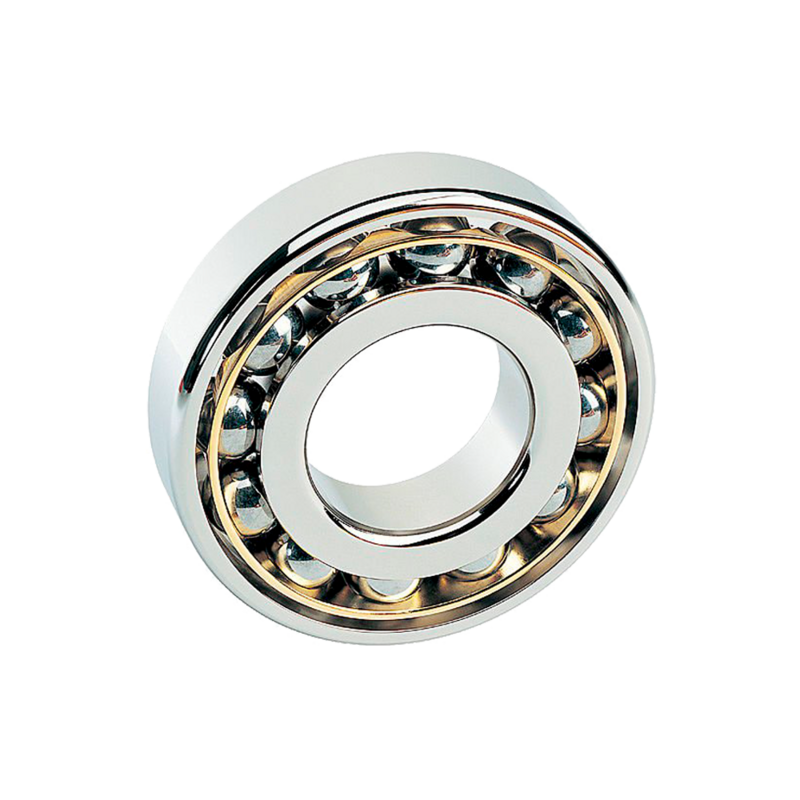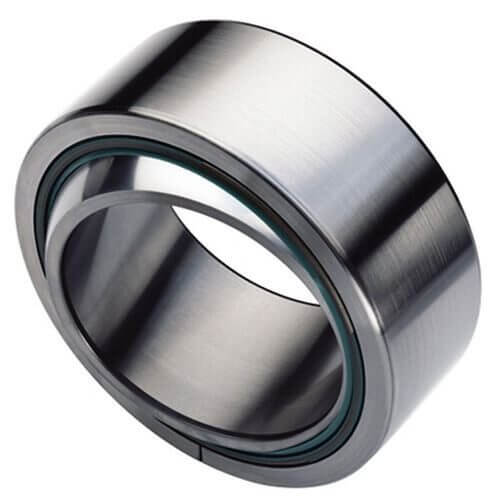Need Support?
Please provide your question. We’ll find you with the best support options.
Deep groove ball bearings are the most representative structure of rolling bearings and are widely used.In addition to the open type, there are also bearings with steel plate dust caps, bearings with rubber seals or bearings with snap rings attached to the outer diameter of the outer wheel.
Deep groove ball bearings are the most representative structure of rolling bearings and are widely used. In addition to bearing radial load, it can also bear axial load in two directions. Low friction torque, most suitable for applications requiring high-speed rotation, low noise and low vibration. This kind of bearing, in addition to the open type, also has a bearing with a steel plate dust cover, a bearing with a rubber sealing ring, or a bearing with a snap ring attached to the outer diameter of the outer wheel. Generally, steel stamping cages are used. Deep groove ball bearings, larger bearings use copper alloy turned retainers. Turning retainers are also used when rotating at high speeds.

Single row angular contact ball bearings can only bear axial load in one direction and generate additional axial force when subjected to radial load.
They are limited in their ability to constrain axial displacement of the shaft or housing to one direction. With a contact angle of 40 degrees, angular contact ball bearings are capable of withstanding substantial axial loads. These bearings are non-separable in design, featuring shoulders at differing heights on both the inner and outer rings to increase load capacity by accommodating more balls.
Double row angular contact ball bearings can withstand larger radial loads, combined radial and axial loads, and moment loads, limiting axial displacement of the shaft on both sides. The inclination between the inner and outer rings of these bearings is limited to control bidirectional axial displacement of the shaft and housing. The allowable inclination angle depends on factors such as bearing size, internal clearance, and design, ensuring that excessive stress is not generated.
Any inclination angle between the inner and outer rings affects bearing lifespan, reduces running accuracy, and increases noise. These bearings typically use nylon or brass cages and must be installed carefully to prevent the main axial load from passing through any ball gap. Additionally, attention should be paid to load distribution across the raceway.
| Feature | Single Row Angular Contact Ball Bearings | Double Row Angular Contact Ball Bearings |
|---|---|---|
| Ability to Bear Axial Load | Can only bear axial load in one direction, generating additional axial force when subjected to radial load | Can withstand larger radial loads, combined radial and axial loads, and moment loads |
| Limitation of Axial Displacement | Limited in constraining axial displacement of the shaft or housing to one direction | Able to limit axial displacement of the shaft in both directions |
The spherical roller bearing has two rows of rollers, the outer ring is a spherical raceway, and the inner ring has two raceways inclined at a certain angle relative to the bearing axis. The bearings are self-aligning, so they are less susceptible to misalignment between the shaft and the bearing housing and bending or deformation of the shaft. In addition to being able to withstand high radial loads, spherical roller bearings can also withstand axial loads acting in both directions.

The spherical roller bearing is characterized by its structure, self-alignment, load capacity, advantages, design features, and applications.
Structure:
Self-Alignment:
Load Capacity:
Advantages:
Design Features:
Spherical roller bearings have a wide range of use-cases. They are used in applications where heavy loads, moderate to high speeds and possible misalignment occur. Some example uses are off-road vehicles, pumps, mechanical fans, marine propulsion, wind turbines, and gearboxes.
Thrust ball bearings are designed to withstand axial loads during high-speed operation, and consist of a washer-shaped track wheel with track grooves for ball rolling. Since the track wheel is a seat cushion type, the thrust ball bearing is divided into two types: flat seat cushion type and self-aligning spherical seat cushion type. In addition, this bearing can withstand axial loads, but not radial loads. Thrust ball bearings are available in one-way and two-way types.
One-way thrust ball bearings consist of two orbiting wheels (collar and housing ring) and a cage with balls. Two-way thrust ball bearings consist of three track wheels and two cages with balls. In the case of bidirectional type, it takes the form of a collar clamped by two retainers fitted with balls.
The rollers of cylindrical roller bearings are usually guided by two ribs of a certain ring. The cage, the rollers and the guide ring form a combined part, which can be separated from the other ring, which is a separable bearing. This type of bearing is more convenient to install and disassemble, especially when the inner and outer rings are required to have an interference fit with the shaft and the outer casing.

Tapered roller bearing contains sections of a cone as a load-carrying element. These rollers fit between the two races that are also sections of a hollow cone. If the races and the axes of rollers were extended, they would all meet at a common point.
Tapered roller bearings are designed to handle higher axial loads besides radial loads. The larger the half-angle of this common cone, the more axial load it can sustain. Thus they work as thrust bearings as well as radial load bearings.
This kind of bearing housing can only bear a single bearing with axial load in one direction, and supports two duplex bearings for directional axial loads. The wheel of the double thrust ball bearing is composed of a shoulder ring and a collar mounted on the shaft and bolts to fix it on the shaft.
Needle roller bearing is a special type of roller bearings that has cylindrical rollers that resemble needles because of their small diameter. Normally, the length of rollers in roller bearings is only slightly more than its diameter. When it comes to needle bearing, the length of rollers exceeds their diameter by at least four times.

Plain bearing is more commonly sliding contact bearings and plain bearings and they are the simplest type of bearing, consisting only of the bearing surface and no rolling elements. Therefore, the journal slides on the bearing surface. The simplest example of a plain bearing is a shaft that rotates in a bore. A simple linear bearing can be a pair of flat surfaces designed to allow motion. For example, drawers and their slides or rails on a lathe bed. Generally, plain bearings are the cheapest type of bearing.
Plain bearings are used for rotational, sliding, reciprocating or oscillatory motion. The bearing remains fixed while the journal slides on the bearing’s inner surface. To facilitate smooth movement, material pairs with low coefficients of friction are selected. This bearing can accommodate some misalignment, multi-directional movements, and is suitable for static as well as dynamic loads. It is used extensively in applications in the agriculture, automotive, marine, and construction industry.
Discover more about the features and applications of various bearings.
Click here to explore more articles and find the perfect bearing for your project.
Needle Bearings (Roller Bearings) are a type of bearing that performs exceptionally well at high speeds. Their rollers are precisely guided by specially shaped, high-rigidity cages with minimal dimensional error. Despite their small cross-section, needle bearings...
How Do Ball Bearings Work? Bearings are often small and unassuming components in a product, yet they are crucial for its proper functioning. Without bearings, many products would fail to operate effectively. But do you know how ball bearings...
Please provide your question. We’ll find you with the best support options.